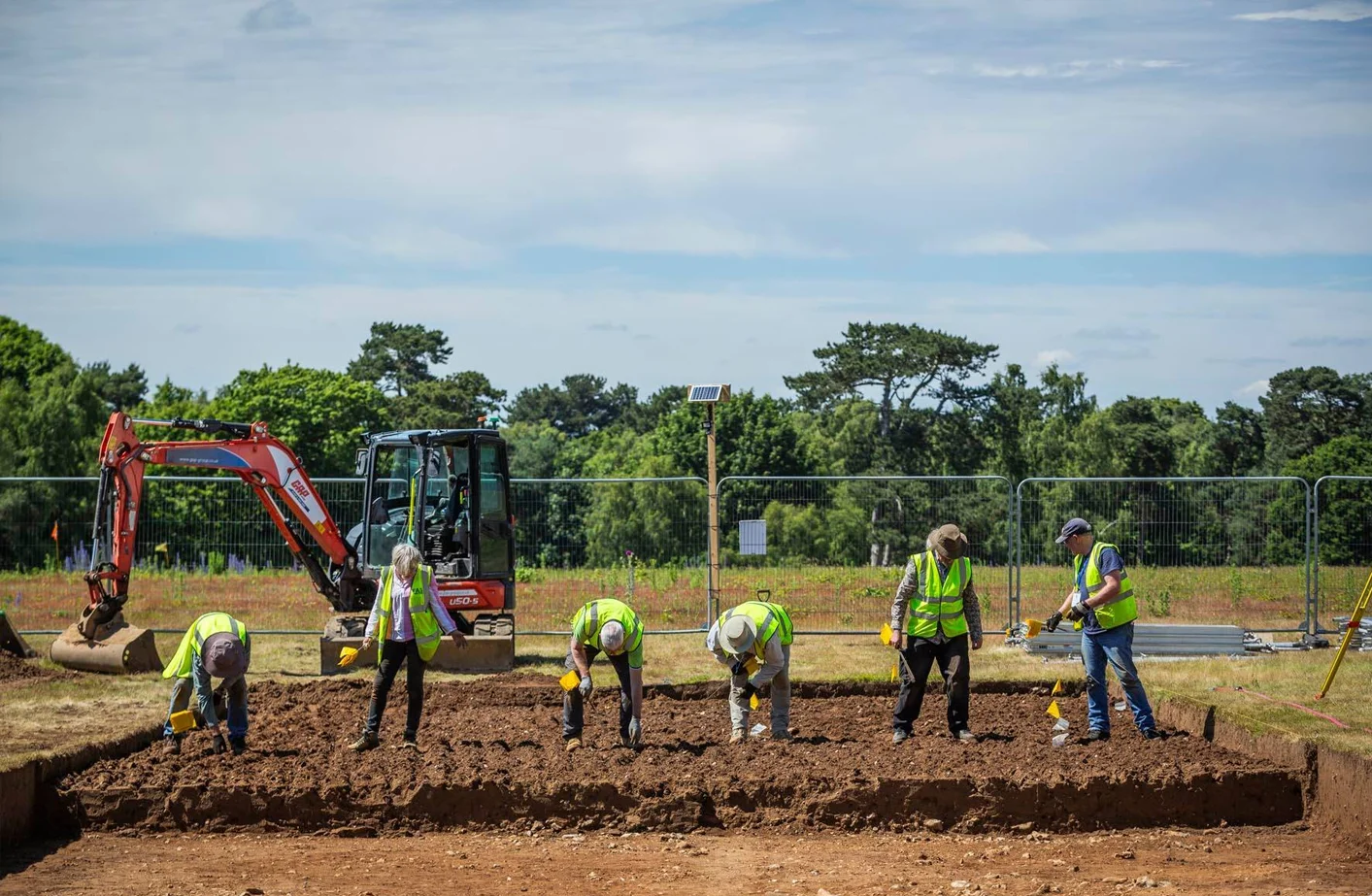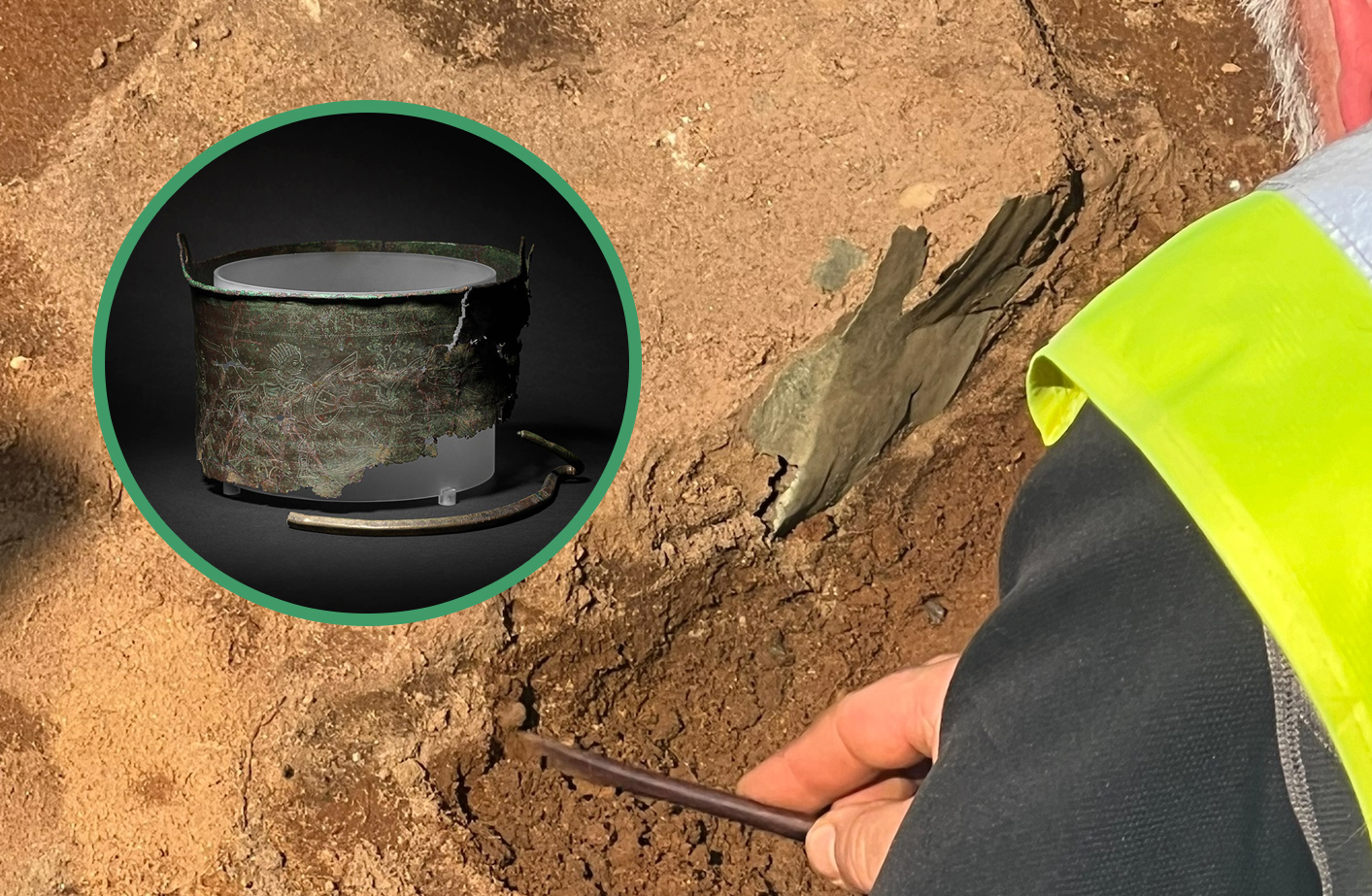Archaeologists have unearthed missing fragments of the Bromeswell bucket, a 6th-century Byzantine artefact first discovered at Sutton Hoo, England, during the 1980s.
As part of a two-year research project, excavations have centred on Garden Field, a tract of land next to the High Hall exhibition. This is the same area where the Bromeswell bucket was first discovered in1980, in addition to fragments in a later excavation during 2021.
Over 80 volunteers and staff have taken part in the project so far, including volunteers from the Restoration Trust, which offers culture therapy to people who live with mental health challenges, and a team from the television show, Time Team.
Employing advanced survey techniques, experts from SUMO Geophysics performed a geophysical study of the field and identified several anomalies.
This was followed by a comprehensive metal detector survey, which uncovered several copper fragments adorned with the same figures found on the Bromeswell bucket. A chemical and elemental analysis using XRF – X-Ray Fluorescence have confirmed that the fragments match the chemical composition of the bucket, in addition to the fragments from 2021.
Regional Archaeologist for the National Trust, Angus Wainwright, said: “Because of its proximity to fragments discovered much earlier, we had hoped this year’s dig would yield more of the Bromeswell Bucket, which originated from the Byzantine empire in the 6th century – around a hundred years before the ship [Sutton Hoo ship burial] and its extraordinary treasure was put to rest.”

“It’s hoped that this two-year research project will help us to learn more about the wider landscape at Sutton Hoo and the everyday lives of the people that lived there, perhaps even shedding some light on why the Royal Burial Ground was placed where it was. So, this find is a great step on that journey.”
According to Wainwright, a closer inspection reveals that the bucket was previously damaged and subsequently repaired, possibly by soldering it back together.
Header Image Credit : National Trust – East of England
Sources : National Trust







